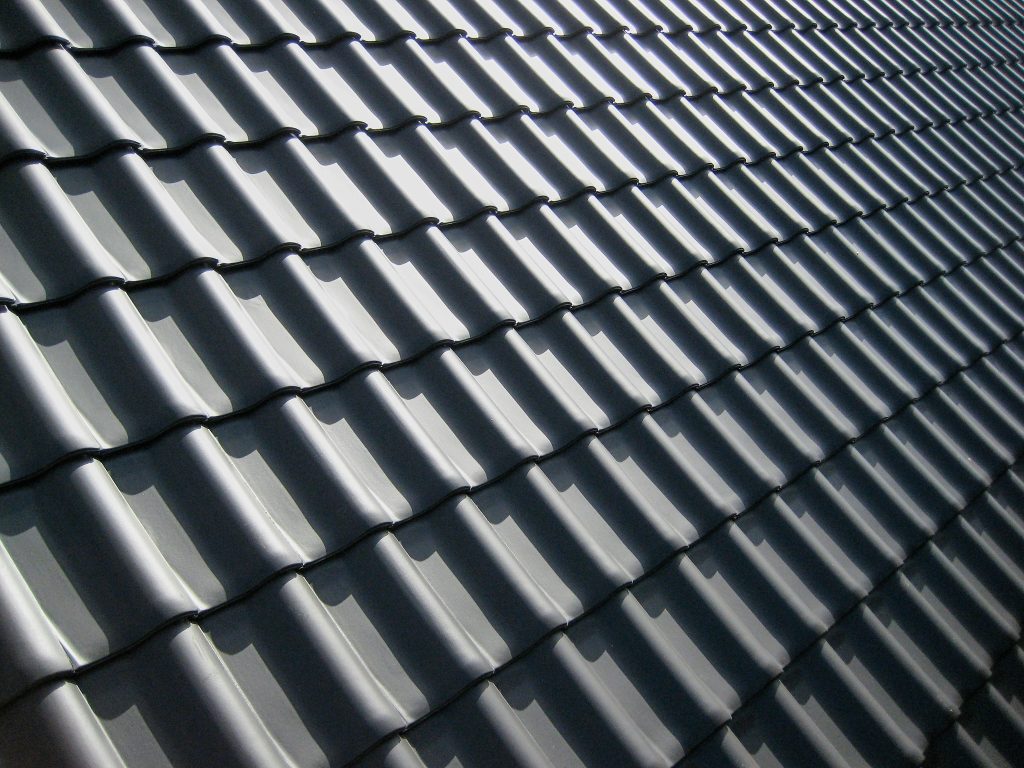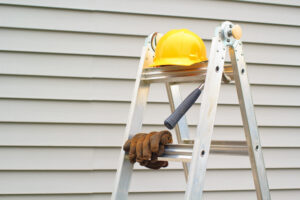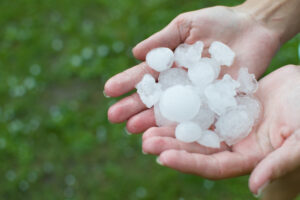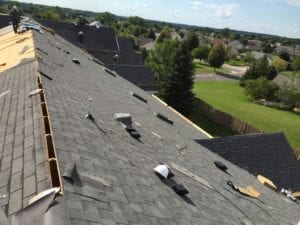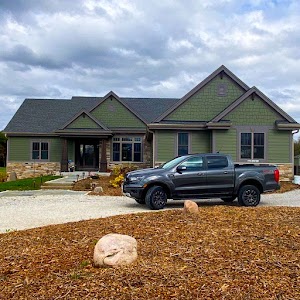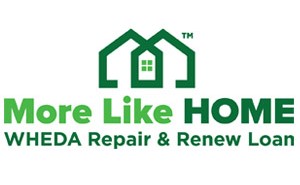Metal roofs present numerous advantages, including exceptional durability, with lifespans ranging from 40 to 70 years. They are energy-efficient, reflecting solar heat and reducing cooling costs by 15% to 25%. Aesthetic versatility enhances curb appeal, featuring over 100 color options and designs that imitate traditional materials. However, considerations such as higher initial costs, typically between $11,655 and $30,000, and potential noise during storms may deter some homeowners. Moreover, installation must account for temperature-induced expansion and contraction. Exploring these factors can help you make an informed decision about whether a metal roof is suitable for your needs.
What Are the Pros of Metal Roofs?
Metal roofs present several significant advantages that make them an attractive option for homeowners.
Their exceptional durability and longevity, combined with energy efficiency and environmental benefits, enhance their appeal.
Moreover, their aesthetic versatility and low maintenance requirements contribute to their growing popularity in the roofing market.
Exceptional Durability and Longevity
Durability stands as a hallmark of metal roofing, distinguishing it from traditional materials. With an impressive lifespan of 40 to 70 years, metal roofs considerably outlast asphalt shingles, which typically require replacement every 12 to 20 years. This remarkable longevity not only guarantees a sound investment but also minimizes the frequency and cost of roof replacements.
Metal roofing is engineered to endure extreme weather conditions, capable of withstanding winds up to 140 mph and heavy snow accumulation. Such resilience is a reflection of its durability, making it a reliable choice for various climates. Moreover, many metal roofing products come with extensive manufacturer warranties ranging from 20 to 50 years, providing homeowners with added assurance of their long-term performance.
Minimal maintenance is another advantage of metal roofs, as they require far less upkeep compared to traditional roofing materials. This low maintenance nature contributes to their overall durability, reducing the likelihood of repairs or replacements over time.
In addition, the non-combustible properties of metal enhance fire resistance, further extending the life of the roof and guaranteeing safety in diverse environments. Such features collectively position metal roofs as a highly durable and long-lasting roofing solution.
Energy Efficiency and Environmental Benefits
Homeowners increasingly recognize the benefits of energy efficiency and environmental sustainability when selecting roofing materials. Metal roofs stand out in this regard, as they can reflect solar heat, potentially reducing cooling costs by 15% to 25% in hot climates. This significant energy savings not only lowers utility bills but also contributes to a more sustainable lifestyle.
Additionally, metal roofs are eco-friendly, composed of 25% to 95% recycled materials. Their long lifespan, ranging from 40 to 70 years, minimizes the need for frequent replacements, thereby reducing landfill waste and overall environmental impact.
Moreover, at the end of their life cycle, metal roofing materials are fully recyclable, promoting a circular economy and minimizing waste. Energy-efficient coatings can further enhance the reflective properties of metal roofs, improving energy performance ratings and further decreasing energy consumption.
Aesthetic Versatility and Curb Appeal
Aesthetic appeal plays an essential role in enhancing a property’s overall value, and metal roofs excel in this area by offering remarkable versatility in design. Available in a myriad of styles, colors, and finishes, metal roofs provide homeowners with the opportunity to customize their appearance to align with various architectural designs.
With over 100 color options, metal roofing surpasses traditional asphalt shingles in aesthetic versatility, greatly boosting curb appeal.
Modern metal roof designs can effectively mimic the appearance of classic materials such as wood shakes or slate, combining timeless style with enduring durability. This ability to blend effortlessly with different architectural aesthetics contributes to a property’s character and charm.
Additionally, the sleek, contemporary finish of metal roofs is increasingly favored by eco-conscious buyers, enhancing property value in today’s market.
The resilience of metal roofs against extreme weather conditions further guarantees that their visual appeal remains intact over time.
As homeowners prioritize both aesthetics and functionality, the aesthetic versatility of metal roofing provides a compelling reason to weigh this option for enhancing curb appeal while promoting long-term investment value.
Low Maintenance and Resistance to Weather Conditions
While many roofing materials require regular upkeep, metal roofs stand out for their low maintenance requirements and robust resistance to severe weather conditions.
With an impressive lifespan of 40 to 70 years, metal roofs markedly reduce the frequency of replacements compared to traditional materials, offering long-term cost savings for homeowners.
These roofs are engineered to endure extreme weather conditions, including winds up to 140 mph and heavy snowfall, ensuring their durability in harsh climates.
Their resistance to mold, mildew, and pest infestations further enhances their low maintenance appeal, allowing homeowners to enjoy their roofs without the burden of frequent repairs or cleaning.
Additionally, metal roofs are designed with energy efficiency in mind.
Their reflective properties help to reduce heat absorption, potentially lowering cooling costs by up to 25%.
This energy efficiency not only benefits homeowners’ wallets but also contributes positively to the environment.
What Are the Cons of Metal Roofs?
While metal roofs present several advantages, they also come with considerable drawbacks.
The initial installation costs can be markedly higher than traditional roofing materials, and their susceptibility to denting from hail or debris raises concerns for some homeowners.
Furthermore, issues such as noise during storms and potential expansion and contraction may impact overall satisfaction with this roofing choice.
Higher Upfront Costs
Although metal roofs provide considerable long-term savings through their durability and energy efficiency, their higher upfront costs can pose a financial challenge for many homeowners. The average cost of a new metal roof ranges from $11,655 to over $30,000, making it considerably more expensive than traditional asphalt shingles, which typically average around $8,800. This initial investment can be 20-30% higher than that of conventional roofing materials, largely due to the specialized skills required for proper installation and warranty coverage.
Moreover, premium metal roofing options can escalate costs to up to ten times more than asphalt shingles, which can greatly impact immediate financial decisions.
While the longevity and reduced maintenance of metal roofs offer compelling long-term benefits, the substantial upfront expense can deter homeowners with budget constraints. It necessitates careful consideration of whether the initial investment aligns with the anticipated savings on repairs and energy costs over time.
Ultimately, the decision to opt for a metal roof should weigh the higher upfront costs against the prospect of enhanced durability and efficiency, ensuring it fits within the homeowner’s financial strategy.
Susceptibility to Denting
Metal roofs, despite their many advantages, can exhibit susceptibility to denting, particularly in harsher climates where severe weather is frequent. This issue is especially prominent with materials such as aluminum and copper, which are softer and more prone to damage from hail or falling branches.
The likelihood of denting largely depends on the thickness and type of metal used; thinner materials are considerably more vulnerable to impact.
In regions experiencing frequent severe weather events, homeowners may face an increased risk of denting, which not only affects the roof’s appearance but can also compromise its overall performance.
Although some metal roofing options come with warranties against denting, the extent and specifics of these protections can vary widely. As a result, it is essential for homeowners to thoroughly review warranty details before installation.
To mitigate potential denting issues, regular maintenance and inspections are advisable. These proactive measures can help identify early signs of damage, ensuring the longevity and aesthetic appeal of the metal roof.
Ultimately, while metal roofs offer numerous benefits, susceptibility to denting remains a key consideration for homeowners in areas prone to severe weather.
Noise Levels During Rain and Storms
When considering the implications of installing a metal roof, one significant drawback is the noise generated during rain and storms. Unlike traditional roofing materials, metal roofs can produce substantial noise levels when rain hits their surface, which may be bothersome to some homeowners. This sound is often amplified, creating a distracting environment, particularly during heavy downpours.
While some individuals appreciate the rhythmic sound of rain on metal, others find it disruptive, especially if adequate insulation is not installed. Limited options for soundproofing metal roofs can exacerbate these issues, making it challenging for those seeking a quieter living space.
The installation method and the underlayment used play a vital role in mitigating noise levels; specific systems are designed to minimize sound transmission, but they may not fully eliminate the issue.
For homeowners in areas prone to heavy rainfall or storms, the noise produced by metal roofs can be a significant consideration. Weighing this factor against the many benefits of metal roofing is essential for making an informed decision that aligns with personal preferences and lifestyle.
Potential for Expansion and Contraction
As temperatures fluctuate, the potential for expansion and contraction in metal roofs becomes a vital consideration for homeowners. This phenomenon can lead to significant material stress over time, particularly if the installation does not account for the movement.
As metal roofs expand and contract, gaps may develop or fasteners can loosen, compromising the roof’s integrity and potentially leading to leaks.
Moreover, improperly installed metal roofs may produce unwanted noise, such as popping or cracking sounds, during temperature changes, which can be a source of annoyance. To mitigate these issues, it is essential to employ proper underlayment and fastener systems designed to accommodate the expansion and contraction of the materials.
Research indicates that the thermal variability of metal roofs may require more frequent inspections compared to traditional roofing materials, ensuring that any developing issues are promptly addressed.
Homeowners should weigh these considerations against the many benefits of metal roofs, such as durability and energy efficiency, to make informed decisions. Ultimately, understanding the implications of expansion and contraction is vital for maintaining the long-term performance and reliability of metal roofing systems.
Are Metal Roofs Worth the Investment?
Investing in a metal roof can be a strategic decision for homeowners seeking long-term value and sustainability. With an impressive lifespan of 40 to 70 years, metal roofs considerably outlast traditional asphalt shingles, which typically last only 12 to 20 years. This longevity makes metal roofs a considerable investment for those looking to reduce long-term replacement costs.
While the initial installation cost averages around $11,655, homeowners can experience energy savings of up to 25% due to the reflective properties of metal. This can help offset the initial expenses over time.
Moreover, many metal roofing materials incorporate 25% to 95% recycled content, aligning with environmentally conscious choices and reducing landfill waste.
The financial benefits extend beyond energy savings; metal roofs can enhance property value by over $23,000, offering a substantial return on investment when selling a home.
In addition, the warranties of 30 to 50 years provide reassurance regarding the roof’s durability, diminishing the need for frequent repairs or replacements.
Frequently Asked Questions
What Are the Disadvantages of a Metal Roof?
The disadvantages of a metal roof include higher initial installation costs, susceptibility to denting, potential noise amplification during precipitation, limited soundproofing options, and varying warranty coverage, which may not thoroughly protect against damage or performance issues.
What Is the Biggest Problem With Metal Roofs?
The biggest problem with metal roofs lies in their initial cost and susceptibility to denting from severe weather. Furthermore, noise during precipitation can be an issue, necessitating proper insulation to enhance comfort within the home.
Do Metal Roofs Leak More Than Shingles?
Metal roofs generally do not leak more than shingles. Their seamless design and interlocking panels greatly reduce water infiltration, and their lifespan often exceeds that of shingles, resulting in fewer opportunities for leaks over time.
Is a Metal Roof Really Worth It?
Evaluating the worth of a metal roof involves considering its longevity, energy efficiency, and low maintenance needs. While initial costs are higher, the long-term savings and environmental benefits often justify the investment for homeowners.

